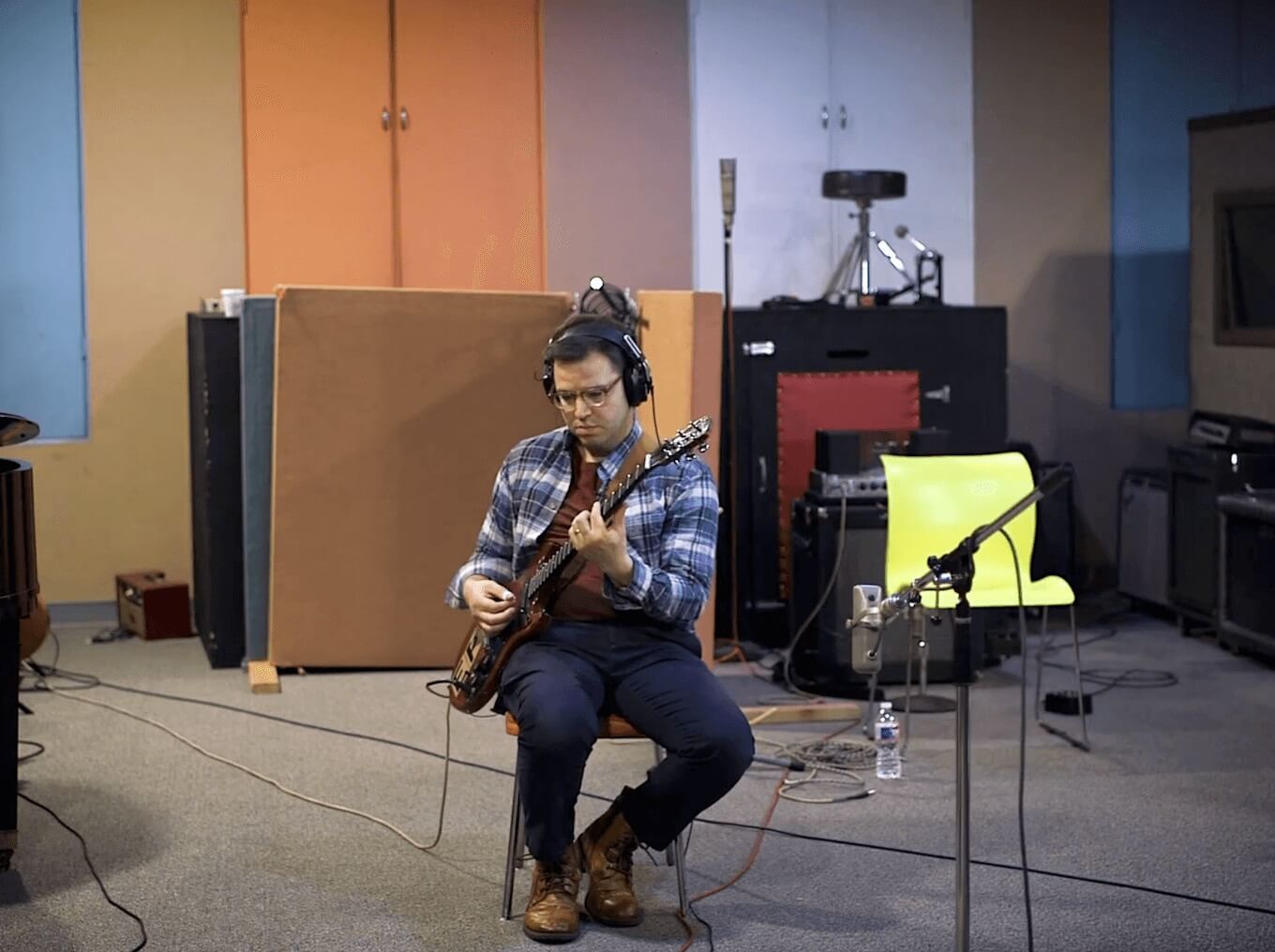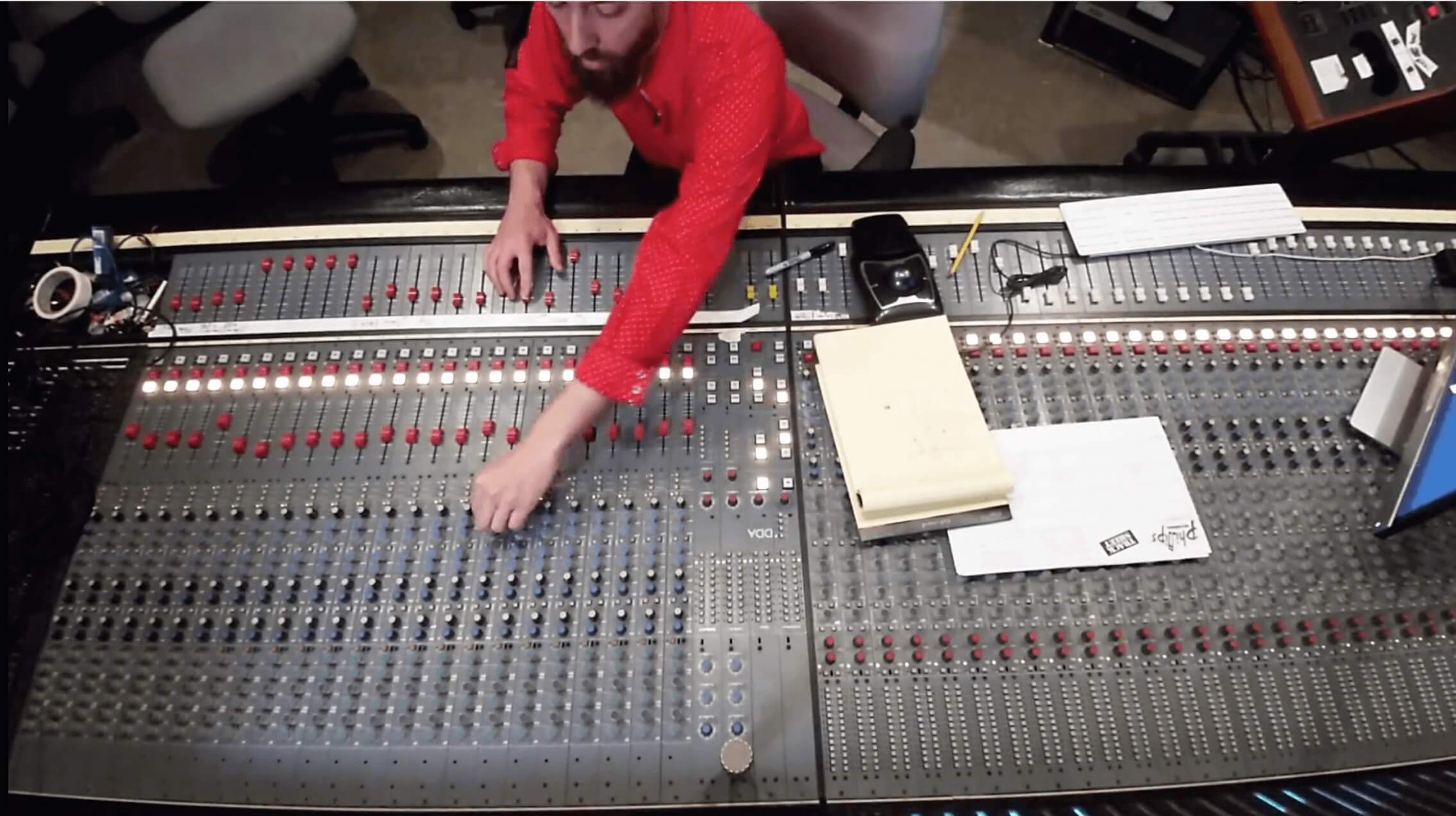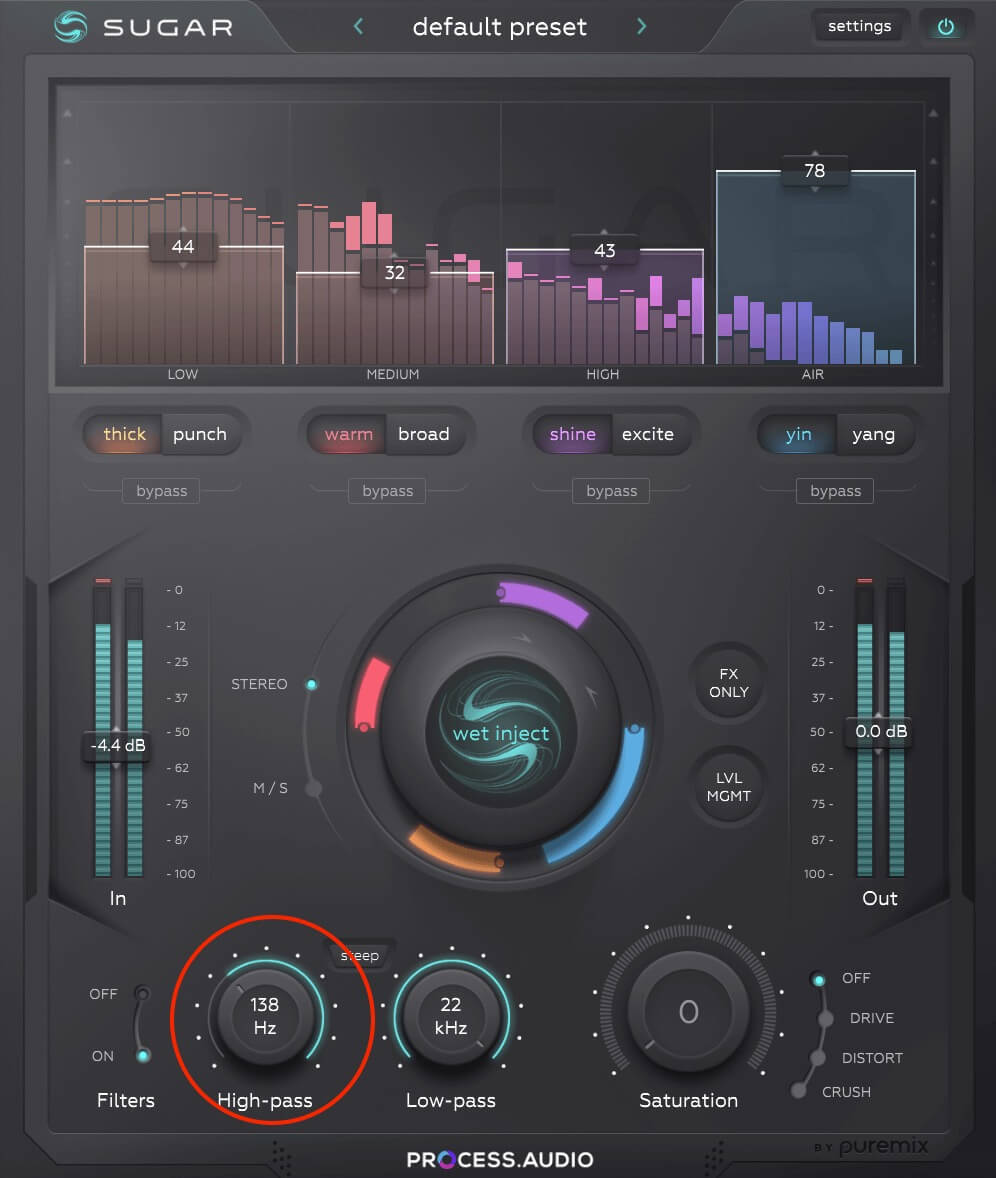Sometimes it’s the little things in a recording that help make a song memorable. In this excerpt from Start to Finish: Matt Ross-Spang - Episode 8 - Recording Electric Guitar, Matt describes working with Eli “Paperboy” Reed to help him craft an electric guitar part for the song “Just As Long As You Want Me.” He talks about the subtle adjustments they made to the part as Eli was overdubbing it.
On the Fly
“We’re trying to find what the song needs, not just slap an electric guitar on it,” Matt says. He explains that there were parts where he asked Eli to play louder or softer, almost pre-mixing the part’s level as it was recorded. He was looking for “holes” where there was room in the arrangement for the guitar to come through more.

Eli “Paperboy” Reed overdubs his electric part on “Just As Long As You Want Me.”
The existing tracks were already pretty crowded in the midrange, with horns, B3 organ and Eli’s acoustic guitar part laid down on top of the bass and drums. The recording also had a lot of group vocals, which were focused in the midrange frequencies. It was essential to make sure that Eli chose chord voicings that didn’t get in the way too much with the other elements.
At one point in the session, Matt had Eli try playing one section an octave higher than planned, so as not to get in the way of some of the other tracks. He also asked him to switch the pickup selector on his guitar to get a thinner sound.
“If he’d played through the whole song on one pickup, I would do some things later, trying to EQ or make it bigger each time or grow,” says Matt. “But by him doing it, it’s more natural and just sounds really cool when he switches to the next thing.”
Riding the Wild Fader
In the song’s pre-chorus, Eli played a fast-picked single-note part. Matt says that he rode the fader as that section was recorded, adjusting the volume to start lower and then get louder.
“It kind of swooped in, so it feels like a little wave,” Matt says. He explains that when you can hear a part perfectly the whole time, you “kind of zone out on it.” But by adjusting the volume, having it come in and out to some extent, it helps keep the listeners’ attention.

Matt makes adjustments as Eli records his part.
“It’s those subtle things in records we love that I think make a big difference,” Matt says, and brings up Link Wray’s classic 1950s hit “Rumble,” as an example. “He changes the tremolo as the song goes. And you don’t really notice it at first, but when you really listen to that record, it’s fantastic.”
Matt says he prefers to create such moments during the recording, rather than trying to approximate them later in the mix. “If you spend a little extra time upfront,” he says, “it will save you hours in the back end trying to make something more unique or special.”
If at First
Matt makes a good point that it’s better to make parts work together well and be interesting sonically when you record them, rather than try to add those qualities in the mix phase. That said, you don’t always have that option, and sometimes you’re at the mixing stage of a project and realize that the tracks are clashing with each other to some degree or masking each other’s frequencies. If changing the parts and re-recording them isn’t an option; the mixing tools you have in your DAW can help you a lot.
In a situation where tracks are masking each other, the most obvious fix is to pan them apart from each other. You have to be careful that solving one masking issue doesn’t create another with a different track.

A high-pass filter—highlighted here in process.audio Sugar—is useful for reducing unwanted low end from guitars, vocals and more.
Using a high-pass filter on problematic tracks can help get rid of some of that lower-midrange mud. Roll-off as much of the bottom as you can get away with without making the track sound too thin.
You can also use EQ to carve frequencies out from one track to make room for another to poke through. You could even match the cut in one track with a similar-sized boost at the same frequency.
If at least one of the parts is MIDI, you can also try transposing it up or down an octave to see if that helps. Or you could look for a different patch that’s not as thick.
In the video, Matt has Eli change his pickup setting to get a thinner sound. You can approximate a pickup change in the mix with EQ. Another option is to try swapping out the virtual amp head or cabinet or mic to change the sound if it’s a DI guitar part whose amp sound is being created by modeling software. Also, distortion tends to thicken up the low end and lower midrange, so backing that off a little can help.
A to B
In the following example, you’ll hear a short section of a song with several different guitar parts that are clashing with each other from a frequency standpoint. These include a distorted slide guitar, a crunchy rhythm guitar and an acoustic, finger-picked rhythm. It feels a little overloaded in the midrange. The instrumentation also consists of a B3-style organ part, an electric bass and a drum part created with loops.
Next, you’ll hear the same example again, but this time with some adjustments made to add clarity. You’ll notice that it sounds more open.
The rhythm guitars were panned wider and the stereo B3 part was panned inward (using the dual pan pots in Pro Tools) so that it wasn’t so wide. The guitar parts were all high-passed to get rid of unneeded low end, and the slide guitar’s distortion was reduced.